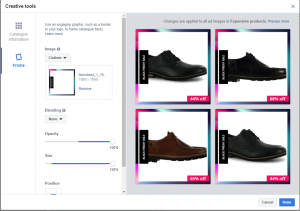Blogging is a simple way to boost your visibility as a brand, whether you are a one man show or larger operation. But starting a blog and abandoning it – or posting sporadically, every few months – looks really bad. Worse than if you had no blog at all.
When I look at failed blogs, I can always tell exactly what happened and when. So let me tell you how to get yours up, running, and performing for you again – and keep it that way.
What’s the frequency, Kenneth?
The first thing you need to look at is how often you’re publishing posts to your blog. There is no magic number for how many posts you need to be publishing; it all depends on how your blog fits into your overall marketing scheme – and what you can keep up with.
Too many decide they are going to publish a daily or even bi-weekly post to their blog and then after a few runs, they wear themselves out. Sound familiar? If you have a blog, you need to keep it updated. The trick is to be consistent so people know there’s a reason to come back – and fresh content will continue to pop in search results.
Make a posting schedule that works for you. Maybe you need to delegate or outsource the writing. If you decide that you’re into posting once a week or even less, maybe it’s time to think about a weekly or monthly email newsletter instead of a blog.
But consistency isn’t everything (although you can’t get going until you’ve nailed that down). There are some other things you might be doing wrong in getting your blog up and running.
Promote your posts
A great post that nobody sees is pretty much useless – but so is a mediocre post that EVERYBODY sees.
As Brian Sutter at WaspBarcode cautions, “Even if you were born with an abundance of confidence, I don’t recommend promoting your post until it’s really worth promoting. Otherwise, it’s kind of like putting a spoiler on a donkey wagon. You’d just be boosting the power of something that didn’t really have enough power to be worth boosting in the first place.”
Once you know you’ve got a good one, though, you should definitely get it out there! Here are some pro tips to that end (and all they cost you are a little bit of time):
- Post a link on social media and feature your blog on your homepage – and if your time is limited use scheduling tools like Buffer or Hootsuite to queue multiple posts in advance so you don’t forget
- Make sure you have enough images and media in your post to invite clicks when it posts to social
- If you have an email list (you have an email list, right?), schedule notifications about new blog posts to your follower base
- Look up who shares content similar to yours and follow them, direct message them, do whatever it takes to get in touch; see if there are ways you can share their stuff and they can share yours — whether it’s linking to each other within posts or a straight up share on LinkedIn
Make Google happy
You don’t have to be an SEO ninja to optimize your posts for Google. There are plugins in most blogging platforms that will guide you through the process. Some easy options to keep in mind follow (with a hat tip to Kissmetrics’ in-depth post on top internal linking practices):
- Make sure your posts are over 200 words, and have a search phrase and link that matches your headline in the first paragraph.
- If you do link out in your post, make sure the links are relevant. If they’re not, start using that “no follow” option.
- Make sure you’re linking phrases that people might type into a search engine.
- Link deep. Google likes when you link to content on your blog that’s not just your homepage or a contact form.
- And most important: Make sure your posts are RELEVANT. If you try to jam a post full of keywords, your efforts will harm rather than help you. Google does not reward this behavior.
Don’t forget the “ask”
You’re a business person, right? So don’t forget to drum up that business! You should be active on your blog and asking others to interact with you. Make sure your social media buttons are in a good place – this way readers are more likely to share and much more likely to add you to their contacts. Be active in the comment section (but make sure you track spam accounts!).
Keep your language accessible and easy and always create a call to action (CTA) at the end of your posts. Something as simple as “And what about you? Tweet us your ideas on best blogging practices,” can engage people. If you aren’t into starting a forum on your social accounts, just ask readers to sign up for your newsletter or notifications for events.
Whatever your thing is, ask people to do it. This is all about getting more business.
Blogging is simple, but it’s certainly not easy. As long as you remember to be consistent, promote your stuff, and know how a search engine works, your blog will start to gain some traction.
Digital & Social Articles on Business 2 Community(61)





